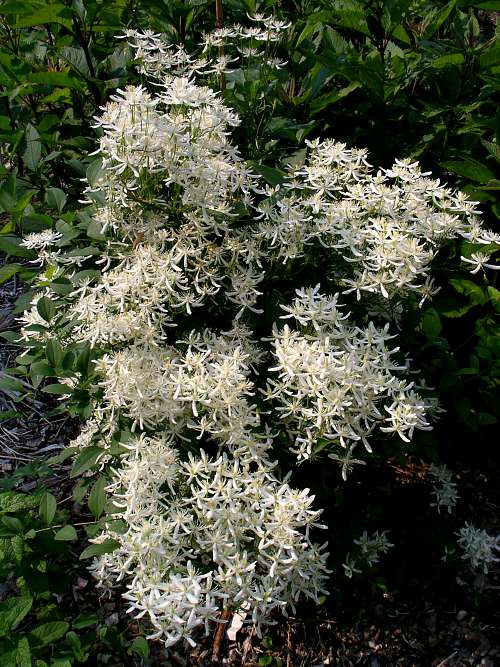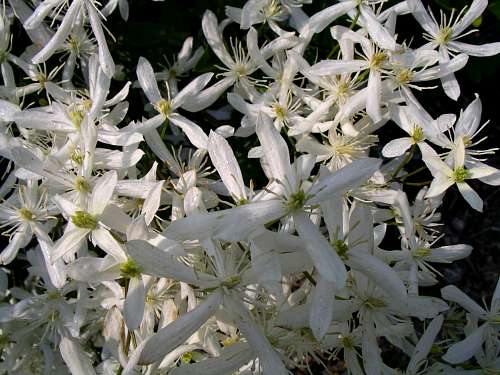Plant of the Month for September, 2015

(KLEM-uh-tiss man-SHEU-ree-ka)
General Information:
An unusual clematis that forms a low bush of very fragrant flowers. Clematis mandshurica makes a great addition to your garden.

Clematis mandshurica; photo by Robert Pavlis
It is similar to C. recta, but flowers about 2 weeks later, on a slightly taller plant which starts to cling when it gets over 1 m tall. C. mandshurica has larger flowers which are more fragrant than C. recta. It is also similar to C. terniflora, the sweet autumn clematis, which blooms a month later on much taller plants and has a much stronger tendency to climb.
Some sources give it a variety status and name it Clematis terniflora var. mandshurica. C. mandshurica is also incorrectly spelled C. mandschurica and C. mandchurica.
Prune hard in spring (Group 3). The plant in the pictures is a first time flowering seedling about three years old and is about 120 cm (4 ft) tall.

Clematis mandshurica; photo by Robert Pavlis
Life Cycle: perennial
Height: 180 cm (6ft)
Bloom Time: mid-summer
Natural Range: China, Mongolia, Russia (Siberia) and North Korea
Habitat: dry slopes, shrubby areas, forest margins
Synonyms: Clematis recta var. mandshurica, (Clematis fusca var. mandshurica is a synonym for C. fusca)
Cultivation:
Light: full sun
Soil: well drained
Water: drought tollerant
USDA Hardiness Zone: 3– 9
Propagation: seed, division
Seedex availability (ORG&HPS annual Seed Exchange): occasionally
